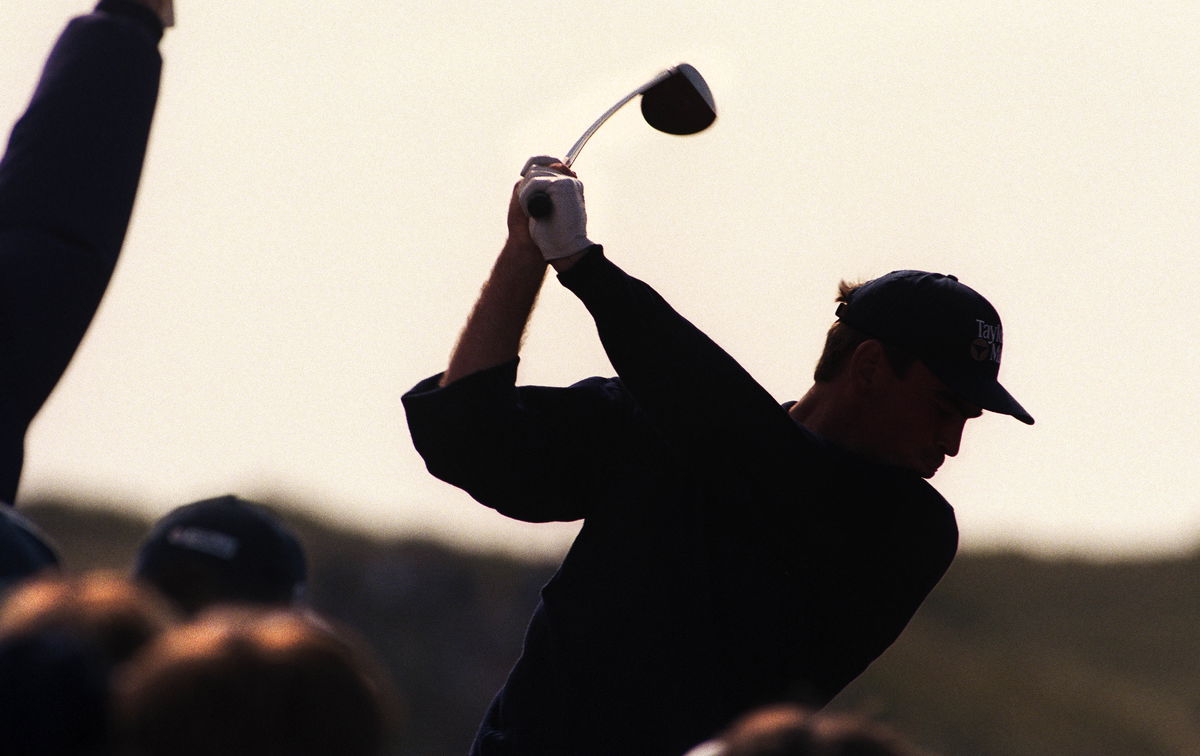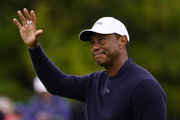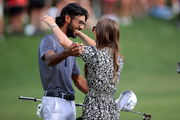
Getty
Silhouetted golfer on the tee during the 127th British Open Golf at Royal Birkdale GC in Southport 16th-19th July 1998. (Photo by David Ashdown/Getty Images)

Getty
Silhouetted golfer on the tee during the 127th British Open Golf at Royal Birkdale GC in Southport 16th-19th July 1998. (Photo by David Ashdown/Getty Images)
Jackson Koivun has already proven he belongs on the same stage as the world’s best. At the Procore Championship, the rising amateur stunned the field with a T4 finish, ending just three shots behind World No. 1 Scottie Scheffler. That performance didn’t just turn heads—it also gave Koivun a unique perspective on the contrasts between college golf and life on the PGA Tour.
Watch What’s Trending Now!
Appearing on The Smylie Show after his breakthrough week, Koivun fielded a question from Charles Barkley about the intimidation factor of competing against amateurs versus professionals. His answer revealed just how different the two environments feel. “I would say college players, it’s very intimidating because they’re fighting for guys they know and they love… for their school, and these five or six guys they play with every single day and they work hard for.” was Koivun’s answer.
Amateurs compete every day with the hopes of making their lives change for the better by turning their skill and love of the game into their career. So, they have quite the drive and hunger to win. Top amateurs usually gain entry into selected PGA Tour fields through exemptions earned from major amateur championships, such as the U.S. Amateur, or through special invitations from tournaments. Consistent success at that level can eventually lead to opportunities at Q-School or the Korn Ferry Tour, where players compete to secure a PGA Tour card. For many, that card marks the moment their lives change forever, opening the door to full-time status, prize money, and the chance to build a career among golf’s elite.
ADVERTISEMENT
By contrast, the PGA Tour brings an entirely different kind of pressure, as Koivun pointed out, “Whereas you get on the PGA Tour, they’re fighting for a job and they’re fighting for a livelihood. So whichever way you want to take that. It’s just two very different intimidation tactics to me, and they both want to beat you equally as bad, but just for different reasons.”
View this post on Instagram
For professional golfers, the first battle in any tournament is making the cut, which secures both prize money and another two days to climb the leaderboard. From there, the competition shifts to chasing the top spots. Every round carries weight, with rankings, sponsorships, earnings, and long-term career paths all on the line. On top of that, professionals operate under constant media scrutiny, where not only every shot, but also behavior and attitude are dissected and scrutinized by analysts and fans.
ADVERTISEMENT
Moreover, while Koivun’s insights highlight the mental side of the game, the differences between amateur and PGA Tour golf show up in the numbers, too. Most college and elite amateur tournaments are played on courses ranging from 6,600 to 7,300 yards—already demanding, but still shorter on average than the PGA Tour, where the typical setup stretches to about 7,300 yards. Driving distance also illustrates the gap: while college players often hit it long, the average PGA Tour driving distance sits at roughly 300 yards, with the very longest pushing around 400-500 yards. Event formats differ as well: amateurs frequently compete in 36-hole or 54-hole tournaments, while PGA Tour professionals almost always face 72 holes across four days, with a cut after 36 holes to decide who plays the weekend.
Koivun experienced that pressure firsthand at Napa Valley, yet passed the test with flying colors. His composure stood out, particularly on a par-5 where his towering 3-iron settled just 30 inches from the hole for an eagle—a shot that left even seasoned fans stunned. And it all came just days after helping secure victory at the 2025 Walker Cup, underscoring the 19-year-old’s ability to thrive under vastly different competitive settings.
ADVERTISEMENT
So, while the hunger is present in both, its the stakes that change. But this hunger also results in nervousness, which can lead to amateurs feeling easily intimidated by established players on the Tour. However, the top of the crop, such as Koivun get the oppurtunity and face the challenge head on.
Top Stories
Tiger Woods’ GF Receives Emotional Message from Daughter Kai Trump After Turning 48

Another PGA Tour Analyst to Leave Golf Channel Days After Cara Banks’ Unexpected Exit – Report

Unexpected Tiger Woods Payout Surfaces in Recently Released PGA Tour Filing

Wishes Pour In From Phil Mickelson and Fans as Akshay Bhatia Ties Knot With Presleigh Schultz

Masters Champion Secures Future With LIV Golf Amid Brooks Koepka Exit Rumors

Jackson Koivun’s journey to be a professional
The 20-year-old Auburn standout has already tested himself against the best, competing in nine professional events and making the cut in seven of them. Along the way, he has posted two top-5 and three top-10 finishes, signaling that his game is more than ready for the next level. Yet, despite these impressive results, Koivun isn’t rushing to turn professional just yet.
ADVERTISEMENT
In May 2025, Koivun secured his PGA Tour card through the PGA Tour University Accelerated Program. This also made him the youngest player to achieve the card. His T-4 finish at the NCAA Individual Championship stroke play pushed him past the required 20-point threshold, making him eligible to turn pro. Still, he surprised many by announcing he would return to Auburn for his junior year. “I love Auburn, and I think college golf is in such a good spot right now,” Koivun explained. “I feel like it’s going to continually prepare me for the PGA Tour.”
Moreover, his résumé already speaks volumes .Koivun won the Haskins Award (college golf’s equivalent of the Heisman Trophy), Jack Nicklaus Award, Ben Hogan Award, and Phil Mickelson Award as a freshman. For now, however, he has chosen to prioritize development both on the course and in the classroom.
That learning process has been evident in recent weeks. After his T-4 finish at the Procore Championship, Koivun admitted he’s eager to absorb as much as possible before fully committing to life as a professional. “I’m trying to do it as quickly as I can before I turn pro, whether that’s the end of this year, end of next year. Just trying to … fully understand what goes on inside the ropes.” At the Procore Championship, Henley finished T-19 at nine under, but Koivun held his own with a stronger showing, proving he can measure up even against established PGA Tour winners.
ADVERTISEMENT
Moreover, Koivun also highlighted that the nervousness that he feels during college golf also helps in preparing him for the nervousness he’ll feel if he becomes part of the PGA Tour.
By choosing patience over haste, Koivun is setting himself up for a smoother transition when the time comes. In fact, with his trajectory, the question is no longer if he’ll succeed among the pros, but just how high he can climb. Could Jackson Koivun one day rise to the top of the Official World Golf Ranking?
ADVERTISEMENT
ADVERTISEMENT
ADVERTISEMENT

